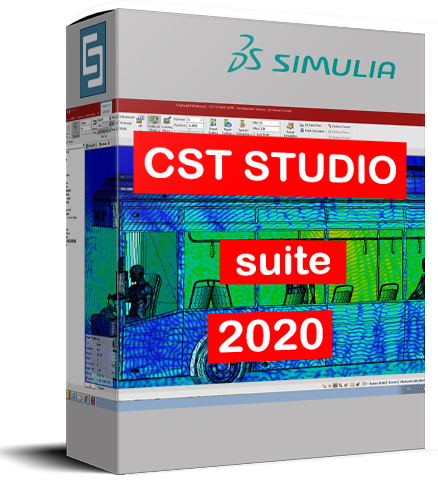

Magnetic Resonance Imaging (MRI)Three EM-fields needed for imaging STRONG magnetostatic field (human: 1 9.4 Tesla, up to 21 T for animals) Mostly superconducting magnets, aligning the spinning protons -> M-Statik Solver Gradient field for positioning (in kHz range) -> Magneto-Quasistatik Solver, LT-Solver HF field to excite spinning protons and receive relaxation signal (60 500 MHz) Rotating B-Field most interesting (B1+) -> Both T- and F-Solvers are of intererst!ĭesign Challenge: Increase SNR of imageSNR ~ static biasing field ~ spin resonance frequency fresFor 7T MRI -> fres = 297 MHz -> lbody ~ 13 cm -> It is difficult to obtain homogeneous field distribution inside body, specialized coils required Overall: SAR computed SAR measured 1.08 1.15 Computed SAR DistributionExample: 7T MRI endorectal coil0 dB = 2.8 W/kg SAR value comparison:0.9 GHz, 1g 0.9 GHz, 10g 1.8 GHz, 1g 1.35 0.96 0.69 1.31 0.93 1.32 1.74 1.13 1.32ĭispersive fit agrees very well for S-Parameter and SAR values in both bands for only 25% extra simulation time| May-10 Visualization of SAR2D or 3D plot including information about position of the maximumĭispersive Broadband SimulationTypical requirement for dual band phones:Re(er) 0.9 GHz 1.8 GHz 41.5 40.0 Im(er) 17.98 (= 0.9 S/m) 13.98 (= 1.4 S/m)įrequency dependent material definition: Second order dispersive fit for tabulated values, only one simulation run requiredĭispersive Broadband SimulationS-Parameter comparison:Compared material settings: Constant settings for 0.9 GHz sim. CST MICROWAVE STUDIO has already been approved by the FCC (USA) to comply with hex td standard drafts.| May-10 IEEE C95.3 Annex E specifies SAR averaging scheme for simulation. A simulation standard IEEE 1528.X is in development 1528.1 requirements for hexahedral time domain codes (end of 2010) 1528.2 application to cars with passenger/bystander (~2011) 1528.3 application to mobile phones near head (~2011) 1528.4 requirements for tetrahedral frequency domain codes CST participates in standards committee.

Standards like IEEE 1528 regulate measurement methods for practical assessment of compliance. SAR Standards under Development Several guidelines and standards specify SAR safety limits (i.e. The constant volume assumption uses an averaged cube size: - Faster (no iterative search for cube with correct mass) - Only approximative (not according to official SAR standard)| May-10 Integrate losses in cubeĪt boundary treatment depends on chosen averaging standard: IEEE C95.3, IEEE 1528.1, CST C95.3 CST legacy Unit of SAR: W/kg P: Power loss density E: Electric field strength J: Current density s: Conductivity r: DensityĪveraging Procedure1. SAR: Overview and BackgroundSAR Specific Absorbtion RateA measure for electromagnetic energy absorbed by biological tissue mass when exposed to radiating device (e.g. Visible Human Project produced by the National Library of Medicine (NLM), Maryland | May-10 HUGOAvailable in different resolutionsMaterials of interest can be chosen

Macros -> Solver -> Calculate Human Material Properties Only one simulation run for broadband results!!| May-10 SAM - Standard Anthropomorphic Model Originally created for measurements plastic shell Shape specified in IEEE/CENELEC/IEC tissue standards simulant liquid Filled with homogeneous glycol-containing (TSL) tissue-simulant liquid, only two materials for simulation Virtual prototyping through simulationFrequency dependent material properties (according to standard) can be modelled by dispersive materials via tabulated input. from Poser 8 () For most high frequency applications fully sufficient Simulate much faster then voxel models obj import allows import of biological models, e.g. CST Voxel Family SAM Phantom, homogeneous models Bio-Medical RF Simulations with CST Microwave Studio Biological Models Specific Absorption Rate (SAR) Bio-Medical Examplesīiological ModelsThe right choice of the biological model is essential for the reliability of a SAR or EMI simulation.


 0 kommentar(er)
0 kommentar(er)
